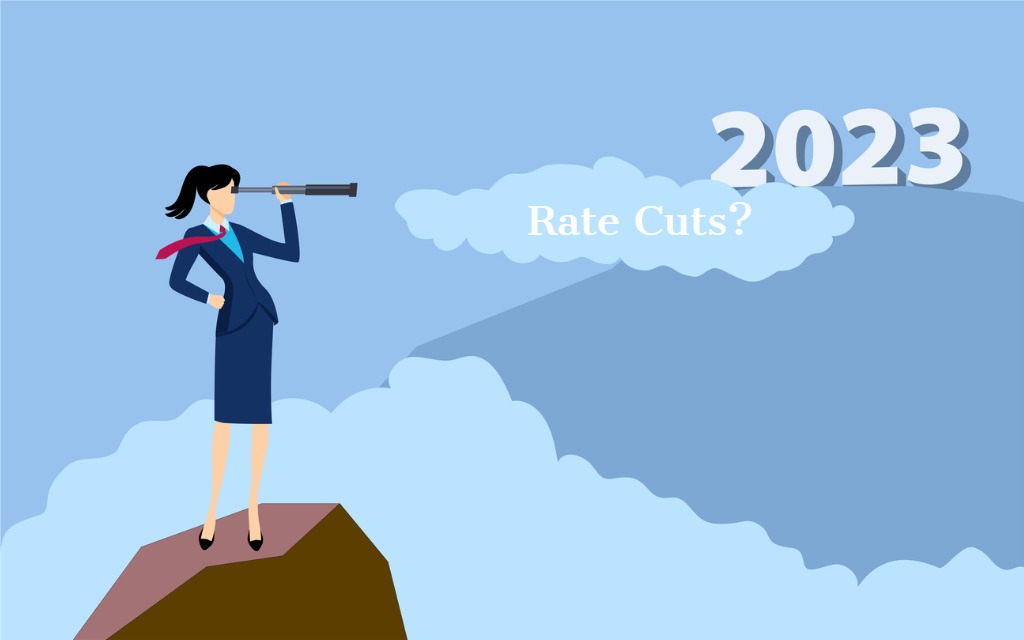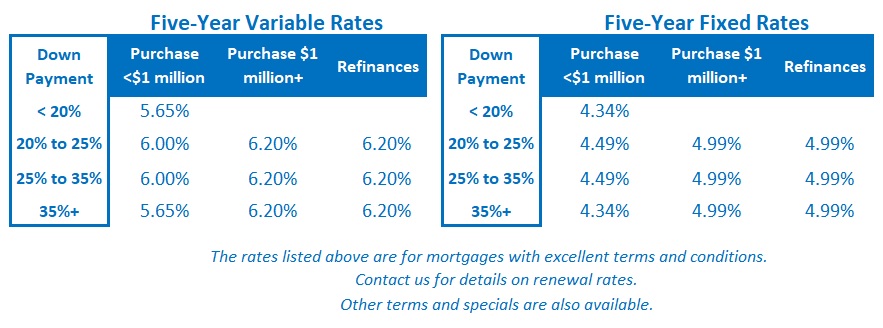What the US Fed’s Pause Will Mean for Canadian Mortgage Rates
May 8, 2023Canadian Inflation Re-accelerates and Mortgage Rates Rise
May 23, 2023 The US Consumer Price Index (CPI) increased by 4.9% on a year-over-year (YoY) basis in April, and by 0.4% on a month-over-month (MoM) basis. Those results were basically in line with the consensus forecast.
The US Consumer Price Index (CPI) increased by 4.9% on a year-over-year (YoY) basis in April, and by 0.4% on a month-over-month (MoM) basis. Those results were basically in line with the consensus forecast.
US CPI has dropped steadily from its peak of 9.1% in June 2022, but its rate of deceleration is slowing, and additional declines will be harder to come by.
US Core CPI, which strips out volatile food and energy prices, clocked in at 5.5% in April YoY and at 0.4% MoM in April.
US Core CPI has now increased by 0.4% MoM for five months in a row, and on a YoY basis it is now higher than overall CPI (5.5% vs. 4.9%). That means food and energy prices, which are the most volatile inputs to overall CPI, are now pulling US inflation down instead of up. Going forward, other slower moving prices must do their part if inflation is going to continue to cool.
The shifting composition of today’s US inflation pressures is also important to note.
The initial US price spikes were primarily tied to goods prices, which account for about two-thirds of the US CPI. Those prices are now mostly flat or falling because supply chains have come back online. But service prices, which account for the other third of the US CPI, are still increasing because they are tightly linked to rising labour costs. (US average wages rose by 4.4% in April YoY, up from 4.2% in March.)
Labour costs are among the stickiest of all prices, in part because their increases can be baked into collectively bargained contracts that extend well into the future. To cite a very recent example, our federal government just reached a new agreement with the Public Service Alliance of Canada union that included wage increases of 12.6% over the next four years. That contract will now serve as a benchmark for other labour negotiations in both the public and private sectors.
Here are some other quick thoughts related to the latest US inflation data:
- US inflation (4.9% YoY) is now below the US Federal Reserve’s policy rate (5%). Edward Jones economist Angelo Kourkafas notes that “historically, the Fed has never ended its rate hikes before its policy rate exceeded the rate of inflation”.
- US shelter costs, which make up one-third of the total US CPI, are still a primary driver of today’s US inflation pressures. But prices in that slow-moving category are finally showing signs of slowing. They were up 0.4% MoM in April, down from 0.6% in March.
- Bond market investors are currently assigning about 60% odds of Fed rate cuts starting in September, and that is driving down longer-term US bond yields and the borrowing costs that are priced on them. Those lower borrowing costs are a tailwind for US economic momentum and could create the need for either more Fed rate hikes, or at the very least, delay the onset of rate cuts. When it comes to rate-cut expectations, the more the bond market expects them to happen, the longer it may take for them to materialize.
To summarize, US inflation continued to decelerate in April, but the pace of cooling is slowing.
The current backdrop gives the Fed time to observe how the rate hikes it has already made are impacting the economy, and to watch how the US banking crisis and debt-ceiling fights play out. But US inflation is still more than double the Fed’s 2% target, and that makes it unlikely rate cuts will occur nearly as quickly as bond-market investors expect. (For my part, I still don’t expect to see rate hikes on either side of the 49th parallel until well into 2024.)
If you’re in the market for a mortgage right now, I will reiterate the same advice I offered in last week’s post.
Today’s five-year variable-rates come with a big upfront rate premium when compared to the equivalent fixed-rate alternatives. I think that makes them an aggressive bet. I believe the more conservative route is to choose between today’s three-, four- or five-year fixed rates. Those rates are based on bond yields that are currently priced on the assumption that inflation will fall quickly (and once you lock in your rate, you won’t be impacted by whether or not that ends up happening).
If I had to pick just one option, I think the three-year fixed rate is the safe middle-of-the-road pick. It comes with a rate that is among the lowest currently available. And three years should allow plenty of time for inflation to be brought to heel, even if it doesn’t fall in a straight line from its current level. The Bottom Line: Government of Canada bond yields bounced around again last week, but once the dust settled, they ended the week almost exactly where they had started.
The Bottom Line: Government of Canada bond yields bounced around again last week, but once the dust settled, they ended the week almost exactly where they had started.
Our fixed-mortgage rates should remain range bound for the time being as long as our April CPI data don’t come with any surprises. (Statistics Canada will release its April report on Tuesday at 08:30, and the consensus is expecting an overall CPI of 4.1% YoY.)
Variable-rate discounts were unchanged last week. For the reasons outlined above, while I will be happy if inflation and variable rates fall more quickly than I expect, I continue to believe that rate cuts won’t materialize until sometime in 2024.







